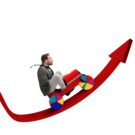Profitability challenges are widely recognized in commercial auto underwriting. The industry has struggled to achieve underwriting profitability in the past 11 years with a combined ratio over 100, and the pandemic and social inflation have done little to brighten the light at the end of the tunnel.[1] However, it’s worth noting that there are lessons from other lines of business that commercial insurers could look to learn from.
Recent profitability challenges stem primarily from external trends, with two key factors standing out: inflation and riskier driving behavior. Inflation has persisted and progressed, reaching a 40-year high in June 2022.[2] This, coupled with supply chain issues, has led to a surge in claim severity and mounting loss costs. Moreover, social inflation, exacerbated by nuclear verdicts in lawsuits involving commercial drivers, has outpaced general inflation at an alarming rate. In a recent study, Triple-I estimates that commercial auto will be impacted the most by social inflation, adding $20 billion in additional commercial auto liability claims in the decade leading up to 2030.[3]
Additionally, analysis conducted by Verisk shows an emerging pattern of riskier driving behavior. We first witnessed this during the pandemic lockdowns of 2020 on roads that were initially nearly devoid of traffic.[4] More severe crashes and severe violations didn’t decline as quickly as overall crashes and minor violations, and this pattern shows signs of carrying forward as traffic fatalities reached a 20-year high at the start of 2022.[5] Other factors contributing to the industry’s profitability woes include the growth in aggregate mileage across the commercial sector, the increase in last-mile deliveries, and the related driver shortage, which can influence the hiring of less experienced and riskier drivers.
Parallels to Personal Auto
Personal auto insurers have generally been more profitable than their commercial auto counterparts. Are there similarities and lessons that can be applied across the lines of businesses?
To achieve profitable growth in either market, it’s critical for insurers to evaluate and price risk for both drivers and vehicles accurately. Credit-based insurance scores help measure the financial risk of individual drivers and business owners, and factors such as garaging address can have significant differences in associated rating relativities. Similarly, vehicle registration reports can help correct a book of business by validating registration information and identifying potential sources of premium leakage related to a specific vehicle, such as branded. Go one step further with VIN decoding solutions, like CL VIN Decode, to uncover granular, vehicle component-specific details on passenger, commercial, and specialized vehicles for even more precise pricing.
Data and analytic accuracy are critical to assigning the right price to the right risk in both personal and commercial lines. Verisk strives to bring together the latest quality data sources combined with our 50+ years of actuarial expertise to deliver powerful analytics and innovation to the industry. For example, a Verisk study indicates that commercial auto insurers could lose more than $1.5 billion this year to premium leakage over mileage radius misclassification alone.[6] Innovations like our RadiusCheckTM solution, which uses cutting-edge technology to take photos of license plates and match them to vehicles in an insurer’s portfolio, can help close the gap in getting to profitability. Each sighting is tagged with latitude and longitude and a date and time stamp to help identify when and how often an insured vehicle travels outside its radius.
Parallels to Small Commercial and BOP
While commercial auto underwriting leaders must evaluate many of the same risks that personal auto insurers assess, in many ways their work overlaps with what’s needed to write small commercial or business owners’ policies (BOP). Reliable business information matters. Our internal analysis demonstrates that 50% of businesses fail in the first five years, and further, 50% of the high-level industry codes are inaccurate in the typical carriers’ book. To price accurately, insurers need to know how to properly classify a business and understand how they are using the insured vehicles. Verisk’s innovative solution enables commercial auto insurers to leverage to address this challenge. Speed and accuracy are important in commercial auto just as in personal or BOP, and solutions such as Vehicle Prefill help insurers reduce time-to-quote and improve quoting accuracy by pulling in all vehicles registered to a business in one easy API call.
The Road Ahead for Verisk
Verisk is constantly pursuing innovations for the industry. For example, let’s examine the driver shortage and riskier driving behavior challenges. To tackle the supply chain bottlenecks, recent federal legislation permits 18-20-year-olds to operate cross-state, big-rig drivers in a test apprenticeship program.[7] This initiative, previously off-limits for drivers of this age group, has sparked concerns regarding safety protocols and criteria for access based on driving behavior.
In response, Verisk has developed a new solution, Public Records IntelligenceTM, built on more than 2 billion court records of driving violations, as well as 100 million police and crash reports. We encourage commercial auto insurers to put us to the test to see how these new data sources can help provide lift and cost-effectively assist with assessing driver risk.
Lastly, just as personal auto insurers have transformed digitally and added usage-based insurance options to meet the needs of the modern insurance buyer, an InsurTech revolution lies ahead for commercial auto. Verisk will be right there with solutions such as straight-through processing and telematics, helping insurance leaders navigate what comes next.
By Gregory Jacobs is Director of Product Management, IoT/Telematics at Verisk.
[1] AM Best Aggregates and Averages, 2011-2021, direct combined ratio calculation.
[2] Federal Reserve Bank of St. Louis (FRED), Consumer Price Index for All Urban Consumers: All Items in U.S. City Average, June 2022 < https://fred.stlouisfed.org/series/CPIAUCSL# > accessed on September 1, 2023.
[3] The Triple-I Blog, Triple-I, CAS Quantify Social Inflation’s Impact on Commercial Auto, February 8, 2022 < https://www.iii.org/insuranceindustryblog/triple-i-cas-quantify-social-inflations-impact-on-commercial-auto/ > accessed on September 1, 2023.
[4] Dorothy Kelly and Raul Retian, “Awaiting a Verdict: The Evidence So Far on Personal Auto’s New Normal”, Verisk’s Visualize, November 6, 2020, < https://www.verisk.com/insurance/visualize/awaiting-a-verdict-the-evidence-so-far-on-personal-autos-new-normal/ >, accessed on September 1, 2023.
[5] National Highway Traffic Safety Administration, “Early Estimate of Motor Vehicle Fatalities for the First Quarter of 2022 (Revised)”, September 2022 , < https://crashstats.nhtsa.dot.gov/Api/Public/ViewPublication/813337 >, accessed on September 1, 2023.
[6] Verisk, “Recovering $6.4 Billion in Commercial Auto Premium Leakage”, 2017, < https://www.verisk.com/insurance/campaigns/recapturing-billions-in-commercial-auto-premium-leakage/ >, accessed on September 1, 2023.
[7] Federal Motor Carrier Safety Administration, “Safe Driver Apprenticeship Pilot Program”, May 16, 2023, < https://www.fmcsa.dot.gov/safedriver >, accessed on September 1, 2023.


















 Personal Auto Driving P/C Insurers to 2024 Underwriting Profit
Personal Auto Driving P/C Insurers to 2024 Underwriting Profit  Report: Insurers Keen on Replacing Legacy Systems Seek More Agility
Report: Insurers Keen on Replacing Legacy Systems Seek More Agility  Study: MGA Market Still Growing
Study: MGA Market Still Growing  PFAS by the Numbers: $165B Ground-Up* Litigation Losses Possible
PFAS by the Numbers: $165B Ground-Up* Litigation Losses Possible 




